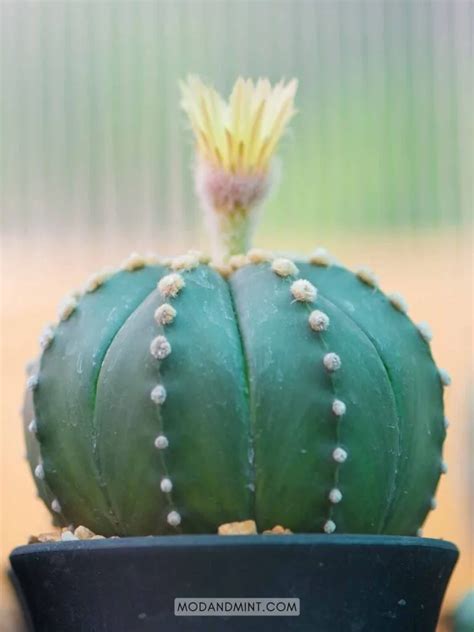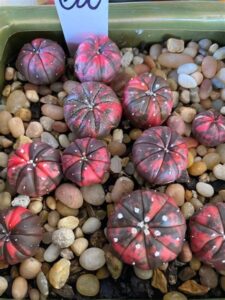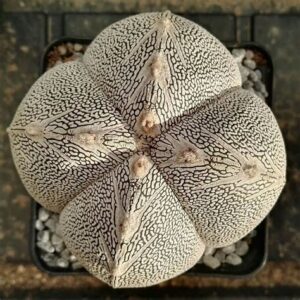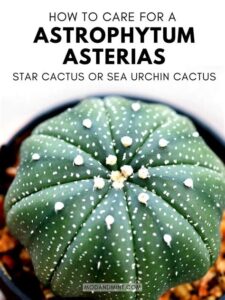Astrophytum cacti, commonly known as star cacti, are not only renowned for their unique physical characteristics but also for their stunning blooms. Understanding how to induce flowering in these captivating plants can be a concern for many enthusiasts. This article delves into the intricacies of getting your Astrophytum to exhibit its floral splendor, ensuring a vibrant display that is both rewarding and aesthetically pleasing.
Getting acquainted with the demands of Astrophytum cacti is critical. These plants, native to Mexico, have distinct requirements that must be met for successful flowering. By embracing proper care techniques, one can enhance their chances of witnessing the blooming process. This candid exploration encapsulates essential factors like light conditions, watering schedules, and seasonal adjustments.
Understanding Astrophytum’s Unique Characteristics
Astrophytum encompasses several varieties, including the popular Asterias, Myriostigma, and Capricorne. Each type possesses unique floral attributes and growth patterns. Before working toward encouraging blooms, it’s crucial to understand the specific traits of your Astrophytum. Their bodies often feature distinctive patterns and textures, ranging from spiky tubercles to smooth, dark-green surfaces. These characteristics make them fascinating succulent specimens.
During their flowering phase, Astrophytum showcases spectacular blooms, which may appear in shades of yellow, white, or red. These flowers typically rise prominently above the cactus, creating a striking contrast with the green body of the plant. Although individual blooms are ephemeral—lasting only a few days—the overall cascade of flowering can be breathtaking, turning your cactus into a natural centerpiece in any space.
Lighting: The Sun’s Essential Role in Flower Induction
One of the most vital components in nurturing blooming Astrophytum cacti is adequate lighting. Astrophytum thrives under strong, direct sunlight for at least 6 to 8 hours per day, a necessity for robust growth and blossoming. This part of their care mirrors their natural habitat, where they bask under the sun in arid desert conditions.
Providing your cactus with sufficient light can be challenging in certain climates or during particular seasons. If natural sunlight is limited, consider using grow lights that emit full-spectrum light. The right light spectrum will not only promote photosynthesis but also help prepare the plant for its flowering stage.
It’s imperative to monitor the conditions under which your Astrophytum is growing. Look for signs of stretching or elongation, indicative of inadequate light. On the other hand, too much direct exposure can lead to sunburn, manifesting as brown or bleached patches on their skin. Balancing exposure is crucial—if your cactus shows signs of distress, adjust the positioning accordingly.
Watering Wisely: A Fine Balance
Watering practices significantly impact the health and blooming of Astrophytum cacti. Unlike traditional houseplants, these succulents need a unique approach to hydration. Cactus enthusiasts must embrace a strategy characterized by infrequent yet thorough watering sessions. Overwatering is a pernicious concern as it can easily lead to root rot—a surefire way to thwart your blooming aspirations.
The best practice is to allow the soil to dry out completely between watering. Depending on environmental conditions, this can vary from every couple of weeks during the growing season to less frequently during dormancy. A well-draining soil mix, often comprising a combination of potting soil, sand, and perlite, is crucial to encourage swift drainage and aeration.
During the spring and summer months, when Astrophytum is actively growing, it is feasible to increase watering frequency slightly. This increase will support the necessary hydration for blooming. However, observe the plant’s response—if the soil remains persistently moist, scale back watering immediately.
Temperature and Humidity: The Ideal Environmental Conditions
Temperature plays a paramount role in the blooming cycle of Astrophytum cacti. These plants are accustomed to warm daytime temperatures ranging from 70°F to 100°F (21°C to 38°C) during their growing season, supplemented with cooler nighttime temperatures. This diurnal temperature variation is beneficial, as it closely resembles their native environment.
During the winter months, Astrophytum goes dormant and requires cooler temperatures, ideally below 60°F (15°C). Recognizing when to adjust the temperature accordingly can impact the plant’s ability to bloom. Avoid exposing your cactus to drastic temperature fluctuations, which can impede its growth and flowering capabilities.
Humidity levels should also be monitored, as Astrophytum prefers dry conditions. High humidity can lead to fungal infections, which may compromise the overall health of the plant. Ensuring good air circulation and positioning your cactus in a well-ventilated area can contribute significantly to maintaining appropriate humidity levels.
Fertilization: Nourishing Your Cactus for Blooming Success
Fertilization plays a crucial role in stimulating the blooming process in Astrophytum cacti. During the active growing season, fertilizing every month can provide the necessary nutrients for flowering. It is advisable to use a diluted cactus fertilizer, specifically designed for succulents. High levels of phosphorus in fertilizers are beneficial, as they promote flowering and root development.
Be cautious with the application. Over-fertilizing can lead to a buildup of salts in the soil, which can harm the cactus and prevent blooming. Always follow the recommended dilution instructions on fertilizer packaging, and avoid feeding your plant during its dormant phase in the winter months.
Pest Management: Keeping Blossoms Safe
Maintaining a pest-free environment is essential for encouraging blooms in your Astrophytum. Common pests, such as mealybugs and spider mites, can wreak havoc on the cactus, inhibiting its ability to thrive and flower. Regularly inspecting your plants for signs of infestation is crucial.
If pests are observed, immediate action should be taken. Isolating the affected cactus can prevent the spread of the infestation. Natural remedies, such as neem oil or insecticidal soap, can effectively eliminate pests while being cautious not to harm your cactus. Maintaining cleanliness in the growing area and minimizing stress factors can reduce the chances of pest infestations.
Patience and Observation: The Ultimate Virtues
Finally, patience is a virtue when it comes to encouraging your Astrophytum to bloom. Cacti can be unpredictable and may not flower annually, especially if their environmental needs are not adequately met. Regular observation of growth patterns, bloom cycles, and the overall condition of the plant can inform future care strategies.
Tracking the environmental conditions, adjusting care protocols accordingly, and allowing your cactus to flourish at its own pace can ultimately lead to a rewarding floral display. Enjoy the journey of nurturing your cactus as it matures and readies itself to unveil beautiful blooms.
In conclusion, fostering the blooming potential of Astrophytum cacti lies in understanding their specific needs, chiefly regarding lighting, watering, temperature, and nutrition. By adopting mindful practices and remaining vigilant of all factors affecting your cactus, flowering can transform from a desire into a reality. With the right care regimen, you can enjoy the splendid blooms that characterize these remarkable plants.





Leave a Comment